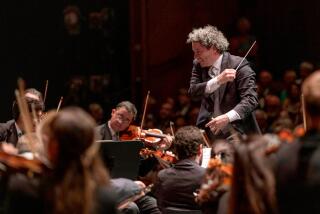Review: A symphony for Los Angeles, just one otherworldly delight at L.A. Phil’s Mozart and Pärt festival
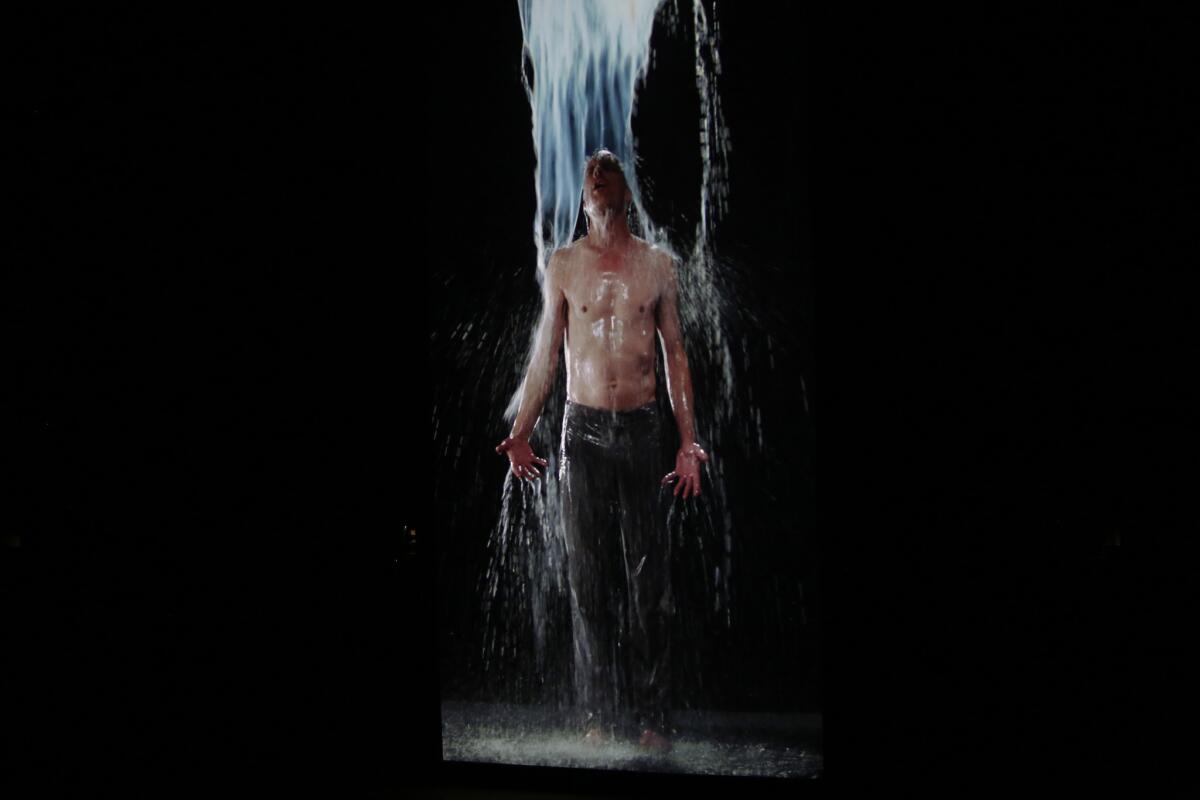
Every great city deserves a significant symphony. Few acquire them. Often for prosaic reasons.
Mozart’s 38th symphony is known as the “Prague” Symphony because it had its premiere during the composer’s first visit to the city. Vaughan Williams’ Second Symphony, the “London,” evokes a quotidian day in the life of the British capital.
Arvo Pärt’s Symphony No. 4, “Los Angeles,” however, is otherworldly. It is the penetratingly spiritual Estonian composer’s portrait of the City of Angels, with emphasis exclusively on heavenly beings. A work of iridescent beauty, the symphony for strings, percussion and harp eases us out of our daily metropolitan grind and summons our radiant guardian angels. No other city has a symphony anything like it.
What ultimately makes Pärt’s “Los Angeles” special to L.A. is how well it suits Walt Disney Concert Hall. A Los Angeles Philharmonic commission, the symphony was given its premiere by Esa-Pekka Salonen in 2009, and Thursday night Gustavo Dudamel brought it back to conclude the second program in his “Mozart & Pärt” festival. The performance was intense and luminous. Pärt was on hand and came on stage for a bow looking deeply affected by it, warmly embracing Dudamel.
The string writing is exceptional. The violins, enhanced by shimmering crotales and resplendent bells, create a sonic halo that hovers over the audience’s head. What other 73-year-old composer (Pärt’s age when he wrote the symphony) can still hear such high frequencies? The heaving lower strings and bass drum are the ground shifting beneath our feet. Our angels must be summoned because we possess inner devils, and the transformations to higher planes in the symphony are not always without violence.
This is music meant for Disney’s translucent acoustics. But the inspiration of Dudamel’s program went beyond that to create a spiritual space that was both uniquely Disney and something beyond. The first half of the concert began with Pärt’s poignant “Cantus in Memory of Benjamin Britten” and with a video by Bill Viola, “Inverted Birth,” that the artist describes as “five stages of awakening through a series of violent transformations.”
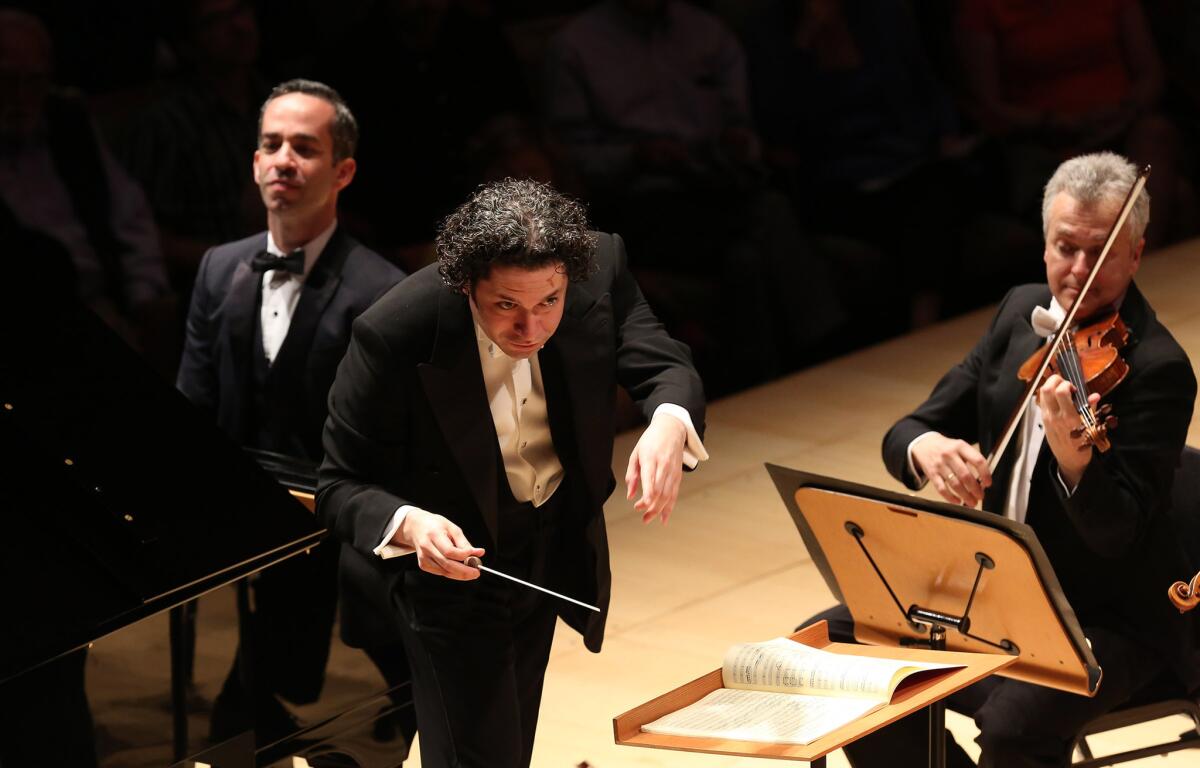
Mozart came between the two. The Piano Concerto No. 17, with Inon Barnatan as soloist, seemed, perhaps, a little out of place on this Pärtean cloud nine. But it reminded us that this was still a symphony concert, and Barnatan’s playing was lively and wonderfully expressive. In the slow movement, moreover, Mozart offers unmeasured silences that produce a momentary sensation of being lost in space, which is hardly usual in a Classical period concerto.
A cosmic vision
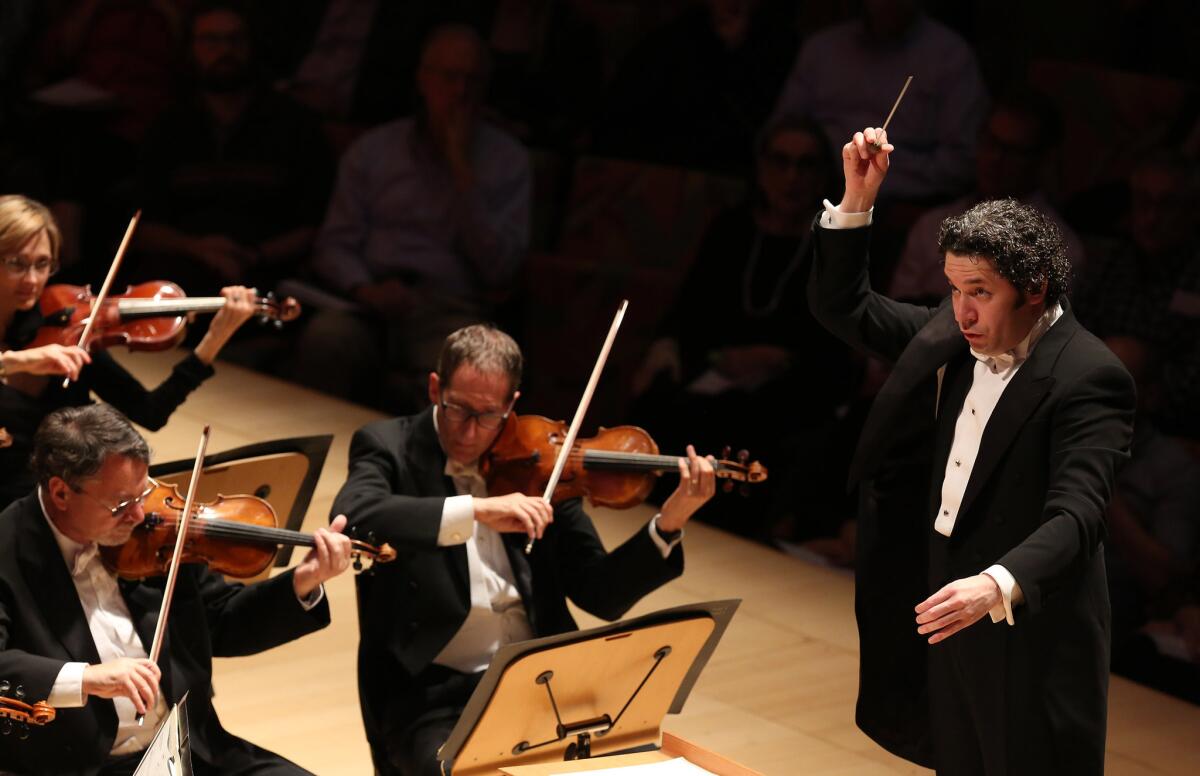
But back to Pärt and Viola. The Cantus, written in 1977 for strings and bell and but six minutes long, sets a scene. A bell tolls. High strings slowly begin a series of descending lines. Lower strings move more slowly, the lower you go, the slower. There is a long crescendo throughout. The system is simple, but the acoustical effect is disconcertingly not. The ear doesn’t know where, so to speak, to look. The result is downright cosmic, a visceral sense of planets in motion. Benjamin Britten is no more, but the world works on a grand plan.
Viola’s video from 2014 is only slightly longer than Pärt’s Cantus. It was shown on the enormous vertical screen that had been created a dozen years ago for the “Tristan Project,” the collaboration between Viola, Peter Sellars and Salonen in a unique production of Wagner’s “Tristan and Isolde.”
“Inverted Birth” is, as the “Tristan Project” was, a purification ceremony. An actor, Norman Scott, stands covered in a black, oily substance. On the soundtrack — a newly released recording of Viola’s early work in experimental music shows him to have been an engrossing musician — are drops of a viscous fluid and a deep bass drone. The fluid gushes up rather than down, changes color and eventually become a clear liquid washing Scott, who experiences wrenching trauma, clean and pure.
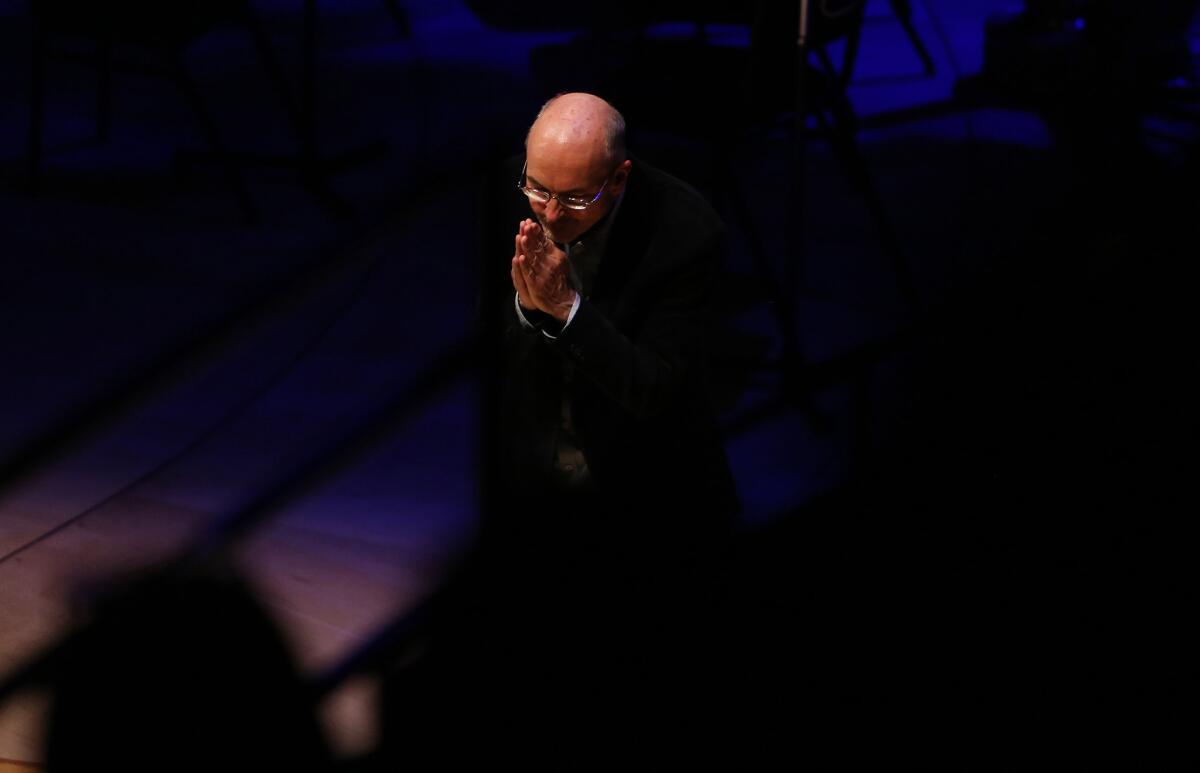
To watch this in the darkened Disney as part of an evening of Mozart and Pärt is a radically different and overwhelming experience than a casual viewing of the video in a museum or gallery. It also produces a radically different effect than the typical concert experimentation with video as accompaniment to, or illustration of, music. One went back into the concert hall after intermission with a mind for Pärt’s 35-minute symphony.
L.A. summons its angels
Dudamel’s approach to the “Los Angeles” had its obvious differences with Salonen’s, which the L.A. Phil recorded on a stunning CD on the ECM label. Salonen supplies glistening clarity and wondrously penetrating bass. Dudamel offers his fuller, more all-embracing sound. He is also slower. But Pärt happens to be a hands-on composer, and one can be fairly certain that in both cases this is exactly what the composer wanted.
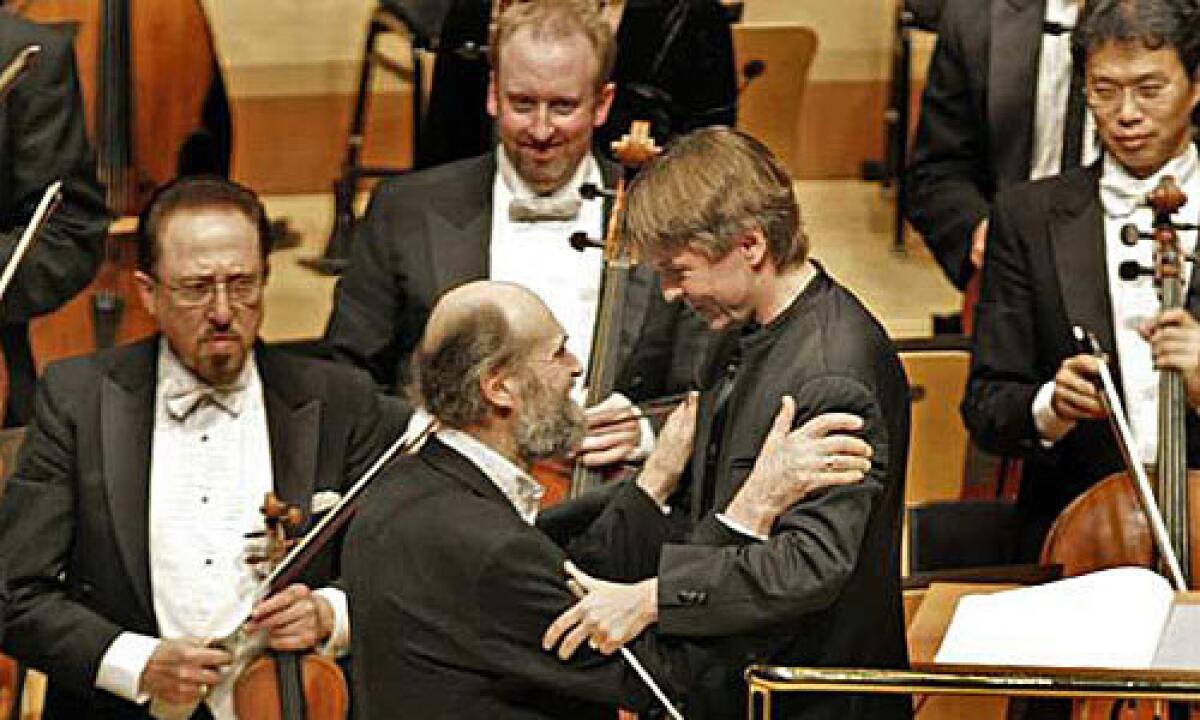
It is also worth noting that for all its spiritual unearthly intent, the symphony is ultimately of use in this imperfect world. At the premiere, Pärt added a political context, dedicating the symphony to the then-jailed Russian oligarch Mikhail Khodorkovsky, who the composer felt would be a far fairer leader of Russia than its president. The angels went into action. In 2014, Vladimir Putin pardoned Khodorkovsky, who shortly afterward attended a performance of the “Los Angeles” in Zurich.
A work of iridescent beauty, the symphony...summons our radiant guardian angels. No other city has a symphony anything like it.
— Mark Swed on Arvo Part’s “Los Angeles”
The final performance of “The Angels” program of “Mozart & Pärt” was Friday night. On Saturday and Sunday, the L.A. Phil concludes “Mozart & Pärt” with Dudamel conducting the premiere of a new version for strings of an earlier Pärt choral work surrounded by two Mozart symphonies.
Los Angeles Philharmonic, “Mozart and Pärt: World Premiere of ‘Greater Antiphons’”
When: 2 p.m. Saturday and Sunday
also
Los Angeles Philharmonic, “Mozart and Pärt: Organ Works”
When: 7:30 p.m. Sunday
Where: Walt Disney Concert Hall, 111 S. Grand Ave., downtown Los Angeles
Cost: $26.50-$213.50
Info: (323) 850-2000, www.laphil.org
MORE:
Dudamel makes Mozart and Arvo Pärt a matter of life and death
109 cellos and one obsession in Walt Disney Concert Hall
Matthew Aucoin’s ‘Evidence’ is evidence of a young composer on the rise
Why Andriessen’s daring and difficult ‘Theatre of the World’ will stand the test of time
On Twitter: @markswed
More to Read
The biggest entertainment stories
Get our big stories about Hollywood, film, television, music, arts, culture and more right in your inbox as soon as they publish.
You may occasionally receive promotional content from the Los Angeles Times.

